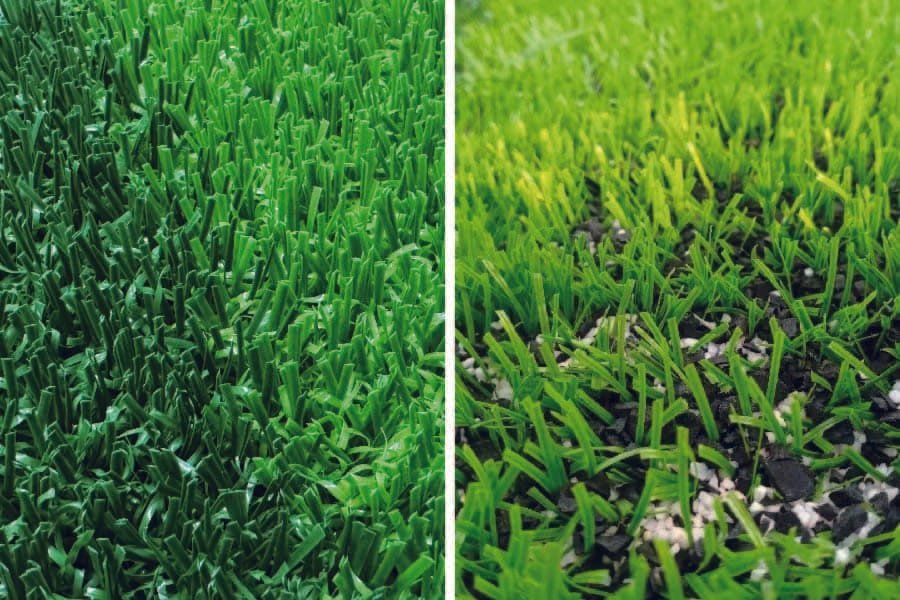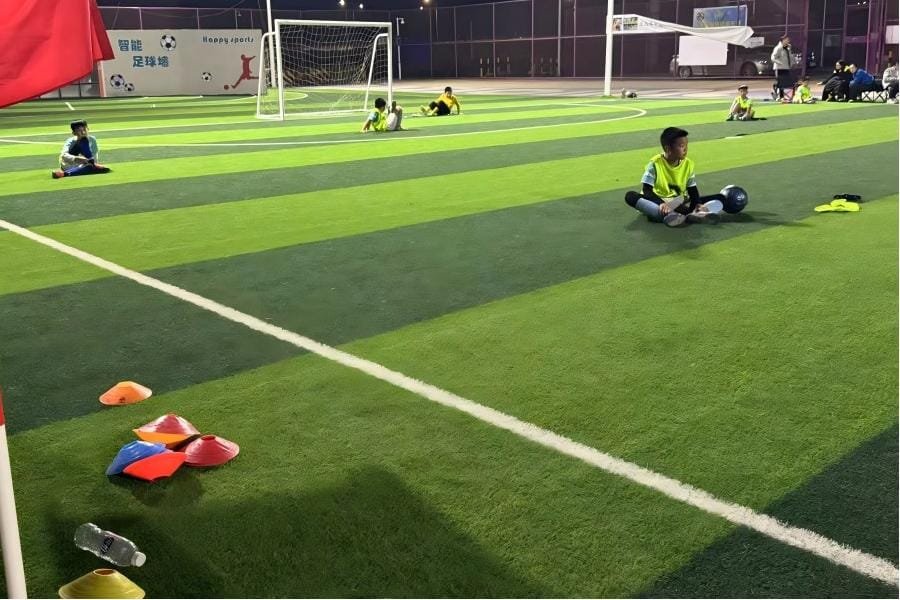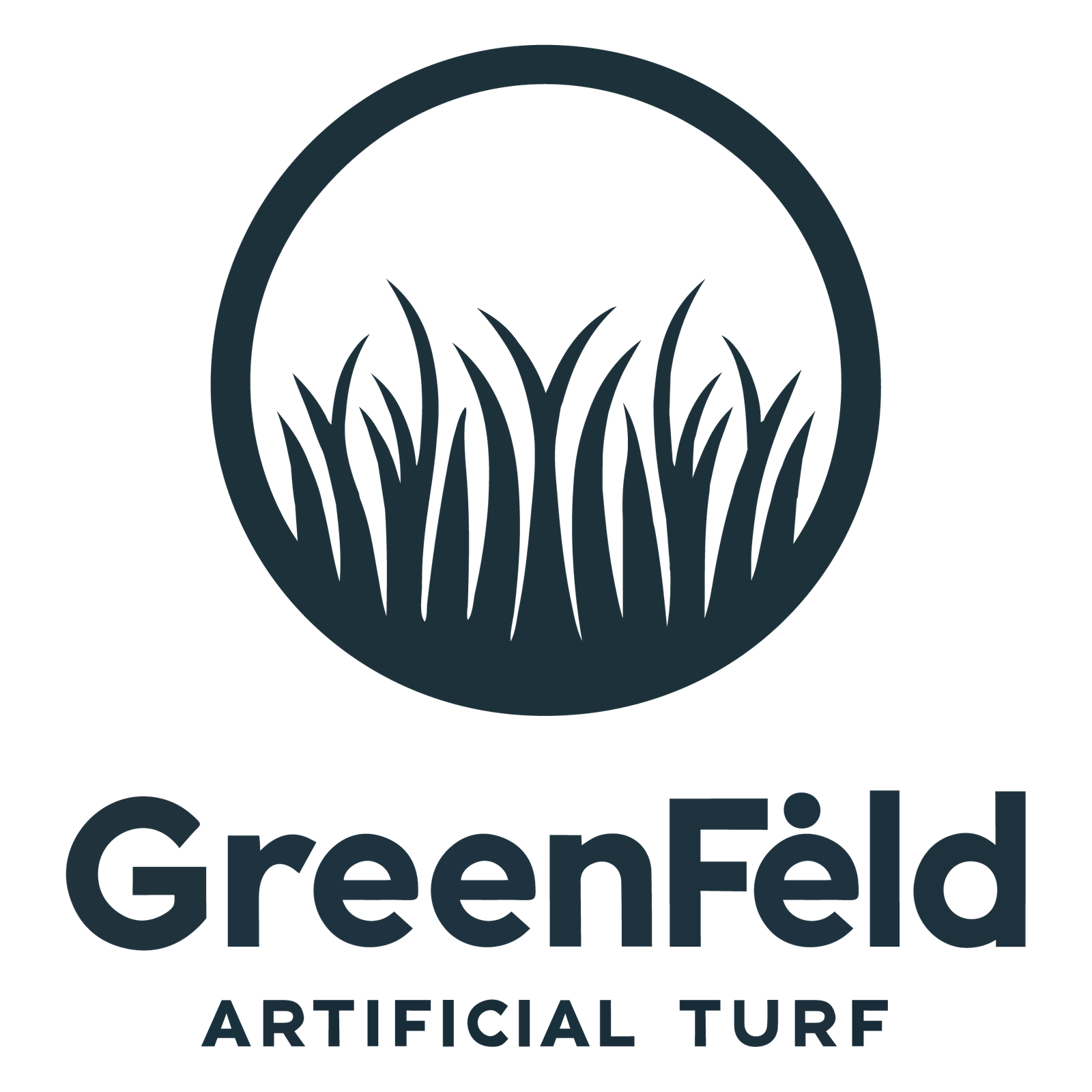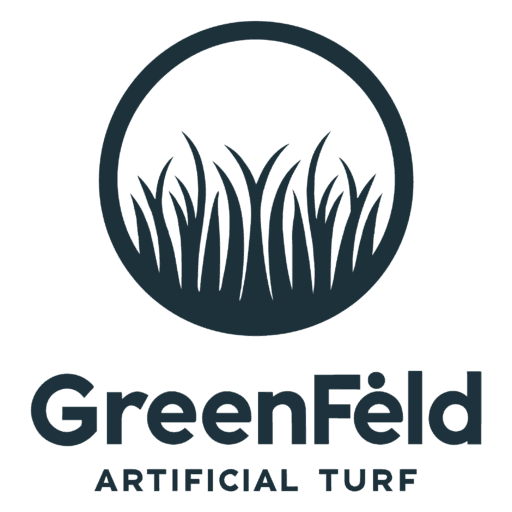Struggling to decide between infill or non-infill artificial grass? Choosing incorrectly can lead to poor durability, disappointing aesthetics, or unnecessary maintenance and expenses.
Infill artificial grass contains added materials like sand or rubber granules to enhance stability, drainage, and durability. Non-infill turf relies solely on dense fibers, making it simpler and quicker to install, but typically less resilient in high-traffic areas.

Infill vs Non-Infill Artificial Grass
Let me share my professional insights clearly, so you can confidently choose the right type of artificial grass for your specific needs.
What is the difference between infill turf and non infill turf?
Confused about what sets infill and non-infill turf apart? Choosing incorrectly can quickly turn your artificial grass project into a costly headache.
Infill turf uses materials like sand or rubber granules placed between fibers for extra support, stability, and drainage. Non-infill turf relies entirely on tightly woven fibers without added material, simplifying installation.

Difference Between Infill and Non-Infill Turf
Key Differences Clearly Explained:
| Features | Infill Turf | Non-Infill Turf |
|---|---|---|
| Material used | Sand, rubber granules, cork granules | Dense synthetic fibers only |
| Stability | High stability, reduced flattening | Moderate stability, may flatten faster |
| Maintenance | Regular brushing required | Lower maintenance, occasional brushing |
| Drainage | Excellent drainage, reduces pooling | Less effective drainage |
| Installation time | Longer, due to infill application | Shorter, quicker installation |
In my experience running GreenFiend, both options have clear applications. I’ve provided infill turf for clients managing busy landscapes, like hotels or sports facilities, because durability and longevity are crucial. Non-infill turf is ideal for temporary installations or decorative areas that won't see heavy use. Carefully considering your project’s traffic and usage patterns helps ensure the best choice between infill and non-infill solutions.

Infill vs Non-Infill Turf Comparisonf
Is infill good?
Wondering if infill is actually beneficial or just an unnecessary additional expense? Skipping or incorrectly using infill could quickly reduce your artificial grass's lifespan and effectiveness.
Yes, infill is generally beneficial because it increases turf durability, supports grass fibers, enhances drainage, and offers a realistic feel. It is particularly useful in heavily-used areas.

Benefits of Infill in Artificial Grass
Advantages and disadvantages of using infill:
| Advantages of Infill | Potential Disadvantages |
|---|---|
| Improved stability and support | Increased initial installation cost |
| Enhanced drainage and heat reduction | Occasional top-up or redistribution needed |
| Longer lifespan and reduced flattening | Additional initial labor required |
| Provides more natural look and feel | Can be messy if improperly installed |
From my experience at GreenFiend, many clients value infill for its durability and enhanced realism. Hotels, resorts, and recreational zones particularly benefit because guests expect consistently pristine, comfortable landscapes. However, if your artificial grass will be used lightly or temporarily, non-infill may provide sufficient performance and simplicity without extra effort. Balancing your project's specific requirements against these factors helps determine whether infill makes sense for you.
Is infill necessary for artificial grass?
Not sure whether your artificial grass requires infill? Overlooking the need for infill can cause performance issues, while unnecessarily adding it may waste your resources.
Most artificial grass installations benefit greatly from infill, especially in outdoor or high-traffic environments. Infill maintains fiber structure, enhances drainage, and increases durability. However, non-infill turf can be suitable for decorative or low-use areas.

Infill Requirement for Artificial Grass
Situations When Infill Is or Isn't Needed:
| Scenario | Infill Recommended? | Reasoning |
|---|---|---|
| High-traffic areas (Hotels, pools) | Yes, strongly recommended | Maintains durability and appearance |
| Residential lawns | Usually yes | Offers realistic appearance and stability |
| Decorative or low-usage areas | Optional | Less necessity due to minimal wear |
| Temporary event spaces | Typically no | Easy installation and removal without mess |
Throughout my career, I've noticed clear distinctions based on client needs. For high-quality hospitality environments, infill ensures consistently attractive, comfortable surfaces and minimal maintenance. For areas like event spaces or temporary exhibits, non-infill options save time and simplify installation. It's crucial to consider your unique scenario carefully before choosing your artificial grass type.
Will non-infill artificial grass provide enough resilience?
Concerned about whether non-infill turf can handle regular use without flattening? Choosing the wrong type might result in frequent replacements or unsatisfactory performance.
Non-infill artificial grass offers moderate resilience. It can handle low to moderate traffic effectively, but it may flatten quicker in heavily-used areas compared to infill options.

Resilience of Non-Infill Artificial Grass
Evaluating Resilience in Different Scenarios:
| Application | Non-Infill Turf Resilience | Recommendation |
|---|---|---|
| Hotel Landscapes | Moderate (prone to flattening) | Not recommended for heavy traffic |
| Residential Lawns | Moderate to good | Suitable for low-traffic residential areas |
| Sports Fields | Low (quick flattening, low safety) | Not recommended for intense activities |
| Temporary Exhibitions | Good enough for short-term use | Recommended for ease of installation |
Based on my industry experience, non-infill artificial grass is less resilient than infill varieties, particularly in heavily-used spaces. It can flatten quicker, impacting the overall aesthetics and functionality. However, for applications like exhibitions or decorative areas with limited foot traffic, non-infill turf is often sufficient. Proper evaluation of your installation's expected usage ensures that your choice aligns with your needs, providing both value and long-term satisfaction.
Conclusion
Choosing between infill and non-infill artificial grass depends heavily on your specific requirements, usage expectations, and maintenance preferences. Carefully assessing your needs helps ensure a successful, cost-effective, and attractive artificial grass installation.

